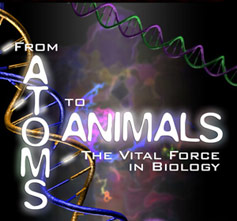

Monday - February 25, 2008
SLAC Today is
available online at:
http://today.slac.stanford.edu
In this issue:
Roger Kornberg to Present SLAC Public Lecture Tomorrow
Nanowires as Energy Materials
symmetry: Computers Take On More Than Aliens
 |
 |
|
Monday - February 25, 2008 |
Roger Kornberg to Present SLAC Public Lecture Tomorrow
Image courtesy of SLAC InfoMedia.
Nobel Laureate Roger Kornberg says that one of the most significant events in intellectual history was the answering of fundamental questions about human existence in chemical terms: What brings matter to life? What are our origins? What is the basis of cognitive activity? In tomorrow evening's public lecture, From Atoms to Animals: The Vital Force in Biology, Kornberg will discuss transcription machinery, which reads genetic code to direct the formation and function of all living things. The atomic structure of transcription machinery was determined with the use of intense X-ray beams and facilities at the Stanford Synchrotron Radiation Laboratory. The result is an image of this complex machinery in action, bringing genetic information to life. The lecture will take place on Tuesday, February 26 at 7:30 p.m. in Panofsky Auditorium. All are welcome to attend. More information... |
||
|
|
||

Nanowires as
|
symmetry:
|
Events
Access (see all)
Announcements
|
| | ||
|
|
||
 <%
Response.AddHeader "Last-modified", getArticleDate()
'Response.AddHeader "Last-modified","Mon, 01 Sep 1997 01:03:33 GMT"
'Monday, December 06, 2010
%>
<%
Response.AddHeader "Last-modified", getArticleDate()
'Response.AddHeader "Last-modified","Mon, 01 Sep 1997 01:03:33 GMT"
'Monday, December 06, 2010
%>View online at http://today.slac.stanford.edu/. |
||